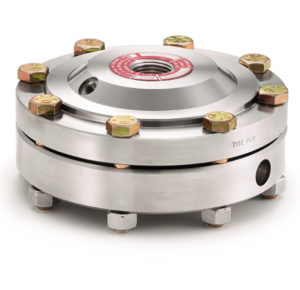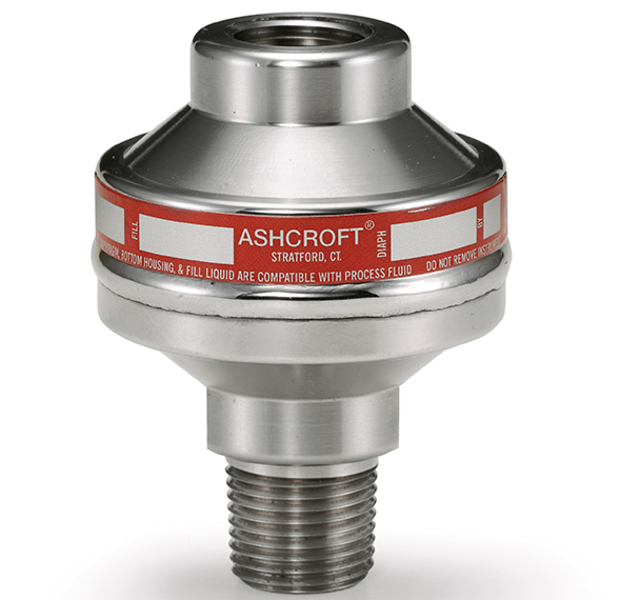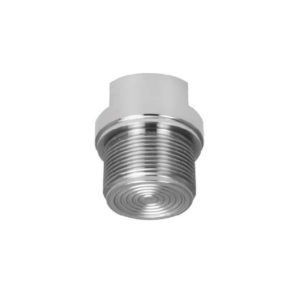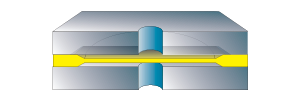

510-511 All-Welded Diaphragm Seals
510-511 All-Welded Diaphragm Seals
Data Sheets
Installation + Maintenance
Declaration of Conformity
Industry Brochures
Selection Guides
Product + Technical Information
- 📄 Product Information Page Product for Sour Oilfield NACE MRO0175 and Sour Petroleum Refining Operations NACE MRO0103 ASH-PI-60D 🇬🇧
- 📄 Product Information Page Diaphragm Seal attached to Bellows Gauge DS-PI-18B 🇬🇧
- 📄 Product Information Page Instruments not Available with Diaphragm Seals DS-PI-87 🇬🇧
- 📄 Product Information Page Diaphragm Seal with Vacuum Gauge DS-PI-45A 🇬🇧
- 📄 Product Information Page Diaphragm Seal with Dampening Device DS-PI-17B 🇬🇧
- 📄 Product Information Page Diaphragm Seal Volumetric Displacement DS-PI-15 🇬🇧
- 📄 Product Information Page Diaphragm Seal Temperature Error DS-PI-14 🇬🇧
- 📄 Product Information Page Diaphragm Seal High Temp Fill Fluid DS-PI-55C 🇬🇧
- 📄 Product Information Page Diaphragm Seal Failures and Corrective Steps DS-PI-04 🇬🇧
- 📄 Product Information Page Diaphragm Seal Chlorine Bromine Fluorine DS-PI-32A 🇬🇧
- 📄 DS-PI-82 pi-page-minimum-maximum-pressures-for-diaphragm-seal EN 03-2023 🇬🇧
Drawings + Models
- 📄 Drawing Diaphragm Seal 511 HP male process 🇬🇧
- 📄 Drawing Diaphragm Seal 511 HP female process 🇬🇧
- 📄 Drawing Diaphragm Seal 511 LP male process 🇬🇧
- 📄 Drawing Diaphragm Seal 511 LP Female Process 🇬🇧
- 📄 Drawing Diaphragm Seal 510 HP male process 🇬🇧
- 📄 Drawing Diaphragm Seal 510 HP Female Process 🇬🇧
- 📄 Drawing Diaphragm Seal 510 LP Male Process 🇬🇧
- 📄 Ashcroft 510-511 Threaded Diaphragm Seal Index 🇬🇧
- 📄 Ashcroft Diaphragm Seal 511 XHP 🇬🇧
- 📄 Ashcroft Diaphragm Seal 511 🇬🇧
- 📄 Ashcroft Diaphragm Seal 510 XHP 🇬🇧
- 📄 Ashcroft Diaphragm Seal 510 🇬🇧
Safety Data Sheets
Key Features
Cost effective
Selection of wetted materials
NACE compliant (optional)
Material certificates to EN 10204:2004 3.1
Flush port (optional) provides easy cleaning / flushing for process media prone to clogging
Wide variety of pressure connection thread options
All-welded construction; prevents inadvertent disassembly
Continuous duty
Markets & Applications
Chemical and Petrochemical
Energy
Biogas and Biodiesel
Oil and Gas
Alkylation – Hydrofluoric and Sulfuric
NACE Compliant Processes (Sour Gas Separation)
Machine Automation
Pumps and Compressors
- Specifications
- Downloads
Process Connection Style
Threaded
Threaded with flushing port
Pressure Rating
PN160 / 2320 psi
689 bar / 10000 psi (optional)
Accuracy
Added Tolerance ±0.5% typical
Wetted Parts Material
Tantalum
Stainless steel 316L (1.4404)
Monel
Duplex
Hastelloy C
Inconel
Instrument Connection Style
Welded
Threaded
Case or Body Material
Stainless steel 316L (1.4404)
Mounting
Stem
Data Sheets
Installation + Maintenance
Declaration of Conformity
Industry Brochures
Selection Guides
Product + Technical Information
- 📄 Product Information Page Product for Sour Oilfield NACE MRO0175 and Sour Petroleum Refining Operations NACE MRO0103 ASH-PI-60D 🇬🇧
- 📄 Product Information Page Diaphragm Seal attached to Bellows Gauge DS-PI-18B 🇬🇧
- 📄 Product Information Page Instruments not Available with Diaphragm Seals DS-PI-87 🇬🇧
- 📄 Product Information Page Diaphragm Seal with Vacuum Gauge DS-PI-45A 🇬🇧
- 📄 Product Information Page Diaphragm Seal with Dampening Device DS-PI-17B 🇬🇧
- 📄 Product Information Page Diaphragm Seal Volumetric Displacement DS-PI-15 🇬🇧
- 📄 Product Information Page Diaphragm Seal Temperature Error DS-PI-14 🇬🇧
- 📄 Product Information Page Diaphragm Seal High Temp Fill Fluid DS-PI-55C 🇬🇧
- 📄 Product Information Page Diaphragm Seal Failures and Corrective Steps DS-PI-04 🇬🇧
- 📄 Product Information Page Diaphragm Seal Chlorine Bromine Fluorine DS-PI-32A 🇬🇧
- 📄 DS-PI-82 pi-page-minimum-maximum-pressures-for-diaphragm-seal EN 03-2023 🇬🇧
Drawings + Models
- 📄 Drawing Diaphragm Seal 511 HP male process 🇬🇧
- 📄 Drawing Diaphragm Seal 511 HP female process 🇬🇧
- 📄 Drawing Diaphragm Seal 511 LP male process 🇬🇧
- 📄 Drawing Diaphragm Seal 511 LP Female Process 🇬🇧
- 📄 Drawing Diaphragm Seal 510 HP male process 🇬🇧
- 📄 Drawing Diaphragm Seal 510 HP Female Process 🇬🇧
- 📄 Drawing Diaphragm Seal 510 LP Male Process 🇬🇧
- 📄 Ashcroft 510-511 Threaded Diaphragm Seal Index 🇬🇧
- 📄 Ashcroft Diaphragm Seal 511 XHP 🇬🇧
- 📄 Ashcroft Diaphragm Seal 511 🇬🇧
- 📄 Ashcroft Diaphragm Seal 510 XHP 🇬🇧
- 📄 Ashcroft Diaphragm Seal 510 🇬🇧
Safety Data Sheets
- Category: Threaded Seals











